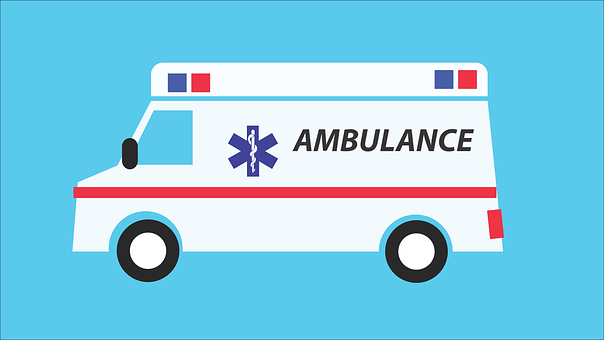When Seconds Count: Mastering Emergency Preparedness
 In the dynamic environment of a childcare center, the unexpected can happen in a heartbeat. A sudden fire alarm, a severe weather alert, an intruder threat, or a serious medical incident – these are scenarios no provider wants to face, yet all must be rigorously prepared for. When seconds count, a well-rehearsed emergency plan and a staff trained to respond with calm competence can mean the difference between chaos and safety, and in the most critical situations, between tragedy and survival. Mastering #emergency-preparedness isn't just a licensing requirement; it's a fundamental professional obligation to protect the children entrusted to your care.
In the dynamic environment of a childcare center, the unexpected can happen in a heartbeat. A sudden fire alarm, a severe weather alert, an intruder threat, or a serious medical incident – these are scenarios no provider wants to face, yet all must be rigorously prepared for. When seconds count, a well-rehearsed emergency plan and a staff trained to respond with calm competence can mean the difference between chaos and safety, and in the most critical situations, between tragedy and survival. Mastering #emergency-preparedness isn't just a licensing requirement; it's a fundamental professional obligation to protect the children entrusted to your care.
The Urgency: Why Every Second Matters
Young children are uniquely vulnerable during emergencies. They have limited ability to recognize danger, react appropriately, or protect themselves. They rely entirely on the adults around them. In a crisis:
- Panic can spread quickly: Children pick up on adult fear and anxiety.
- Evacuation is complex: Moving multiple small children safely requires clear procedures and practice.
- Communication is vital but can be compromised: Phone lines may be down, or information may be slow to arrive.
- Immediate needs arise: First aid, comfort, and basic necessities become paramount.
This inherent vulnerability underscores why "winging it" is never an option. A proactive, practiced approach is essential.
Pillars of Mastering Emergency Preparedness
Mastery in emergency preparedness isn't about a single training session or a binder on a shelf. It's an ongoing, cyclical process encompassing several key elements:
-
Comprehensive Planning:
- Risk Assessment: Identify potential hazards specific to your location and facility (e.g., tornados in the Midwest, hurricanes in coastal areas, proximity to busy roads).
- Written Emergency Operations Plan (EOP): This detailed document should cover procedures for various scenarios:
- Evacuation (fire, gas leak) including primary and secondary routes, assembly points.
- Shelter-in-Place (severe weather, external chemical spill).
- Lockdown (intruder, community threat).
- Medical Emergencies (individual child or widespread illness).
- Missing Child.
- Family Reunification (a clear, secure process for reconnecting children with guardians).
- Special Needs Considerations: Your plan must address the unique needs of children with disabilities or chronic health conditions.
-
Systematic Equipping:
- Emergency Go-Bags: As detailed previously, each classroom or area needs a portable kit with essential supplies (first aid, contact lists, water, snacks, comfort items).
- First Aid Kits: Well-stocked and regularly checked.
- Communication Tools: Functioning landlines, charged cell phones, walkie-talkies, a hand-crank AM/FM radio.
- Safety Equipment: Fire extinguishers (inspected), smoke and carbon monoxide detectors (tested), emergency lighting.
-
Rigorous Training and Practice (Drills):
- All-Staff Training: Every staff member, including substitutes and volunteers, must be trained on the EOP and their specific roles.
- Regular Drills: Practice makes permanent. Conduct drills for all major scenarios (fire, lockdown, shelter-in-place) frequently and at varied times to ensure everyone knows what to do. Document these drills.
- Tabletop Exercises: Discuss hypothetical scenarios to problem-solve and refine plans.
- CPR/First Aid Certification: Ensure an adequate number of staff hold current certifications.
-
Clear Communication Protocols:
- Internal Communication: How will staff communicate with each other during an emergency?
- External Communication: How will you notify emergency services? How and when will you communicate with #parents (without causing undue panic or interfering with #emergency-response)? Designate a spokesperson.
- Information Hub: Establish a central point for accurate information dissemination.
-
Partnerships and Coordination:
- Local Emergency Responders: Invite police, fire, and EMS personnel to tour your facility and review your plans. Their familiarity can be invaluable.
- Licensing Agencies: Ensure your EOP meets or exceeds all regulatory requirements.
- Parents: Educate parents about your emergency procedures (without sharing sensitive security details) and reunification plans.
-
Review, Evaluate, and Adapt:
- After every drill or actual incident, conduct a "hot wash" or debrief. What went well? What were the challenges? How can the plan be improved?
- Update your EOP annually and whenever significant changes occur (e.g., facility layout changes, new staff roles).
Fostering a Culture of Preparedness
Mastering emergency preparedness is also about instilling a mindset. When staff feel confident in their training and the plan, they are more likely to respond effectively and calmly, which in turn reassures children. It’s about empowering individuals to take appropriate action when those critical seconds count.
No childcare provider can predict when an emergency will strike, but every provider can control their level of preparedness. By investing in comprehensive planning, robust equipping, consistent training, and a commitment to continuous improvement, you create a setting where safety is paramount, and where you are truly ready to protect your young charges, no matter what the circumstances.
References:
- Ready.gov (FEMA) - Child Care Resources: https://www.ready.gov/kids/educators/child-care
- Child Care Aware® of America - Emergency Preparedness: https://www.childcareaware.org/our-issues/health-safety/emergency-preparedness/
- American Academy of Pediatrics - Preparing Child Care Programs for Emergencies: https://www.aap.org/en/patient-care/disasters-and-children/preparing-child-care-programs-for-emergencies/
- Your State's Child Care Licensing Agency (for specific emergency preparedness regulations).
- Disaster Preparedness Training
- Save Lives With Skill: CPR Training
- CPR and First Aid Training for Child Care Providers: Essential Skills for Emergencies
- Basic Health and Safety Training: The Essential Guide for New Child Care
- Basic Health and Safety in Childcare: A Complete Guide for Providers
- When Seconds Count: Real-Life Cases Where Health & Safety Training Saved Lives
- When Seconds Count: Mastering Emergency Preparedness
- ⏰📘 How Many Training Hours Do Childcare Staff in North Dakota Need Each Year?